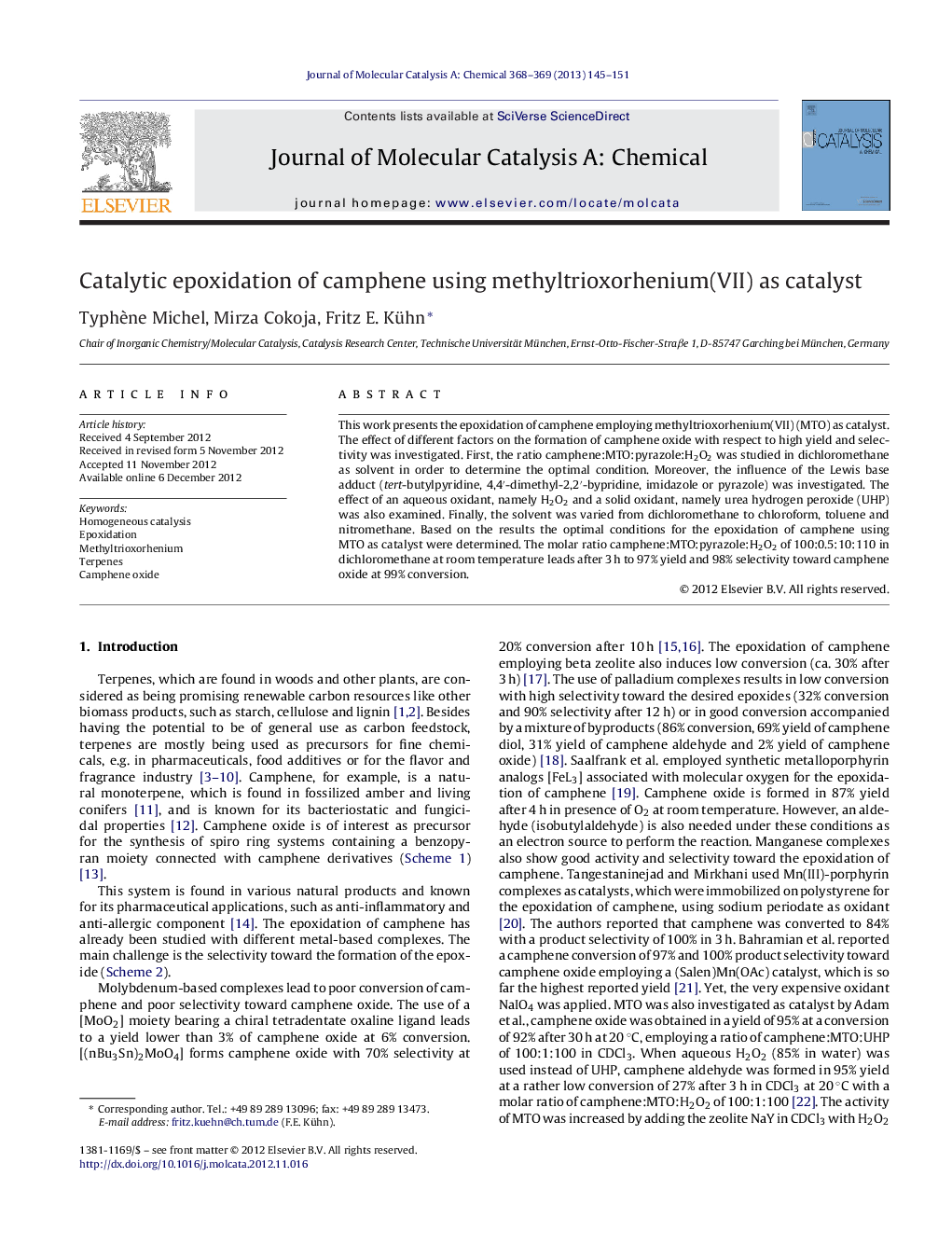| کد مقاله | کد نشریه | سال انتشار | مقاله انگلیسی | نسخه تمام متن |
|---|---|---|---|---|
| 65926 | 48409 | 2013 | 7 صفحه PDF | دانلود رایگان |

This work presents the epoxidation of camphene employing methyltrioxorhenium(VII) (MTO) as catalyst. The effect of different factors on the formation of camphene oxide with respect to high yield and selectivity was investigated. First, the ratio camphene:MTO:pyrazole:H2O2 was studied in dichloromethane as solvent in order to determine the optimal condition. Moreover, the influence of the Lewis base adduct (tert-butylpyridine, 4,4′-dimethyl-2,2′-bypridine, imidazole or pyrazole) was investigated. The effect of an aqueous oxidant, namely H2O2 and a solid oxidant, namely urea hydrogen peroxide (UHP) was also examined. Finally, the solvent was varied from dichloromethane to chloroform, toluene and nitromethane. Based on the results the optimal conditions for the epoxidation of camphene using MTO as catalyst were determined. The molar ratio camphene:MTO:pyrazole:H2O2 of 100:0.5:10:110 in dichloromethane at room temperature leads after 3 h to 97% yield and 98% selectivity toward camphene oxide at 99% conversion.
Figure optionsDownload high-quality image (94 K)Download as PowerPoint slideHighlights
► Methyltrioxorhenium as epoxidation catalyst.
► Catalytic epoxidation of camphene.
► Product formation highly depends on the reaction conditions.
► Pyrazole as Lewis base adduct.
► Optimal conditions lead to 97% yield at 99% conversion in 3 h.
Journal: Journal of Molecular Catalysis A: Chemical - Volumes 368–369, March 2013, Pages 145–151